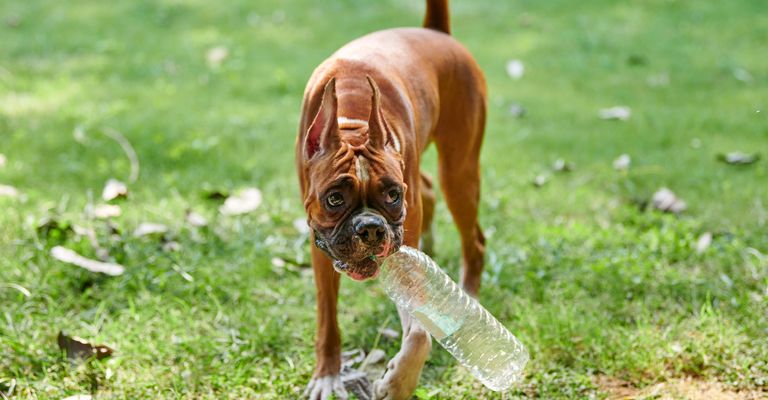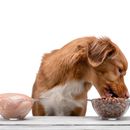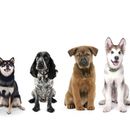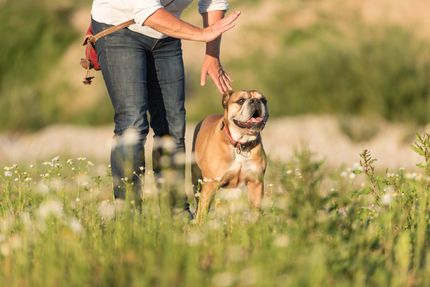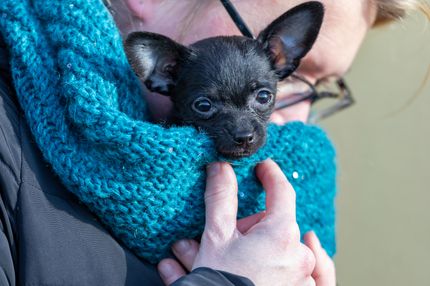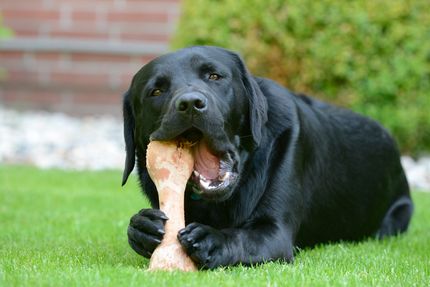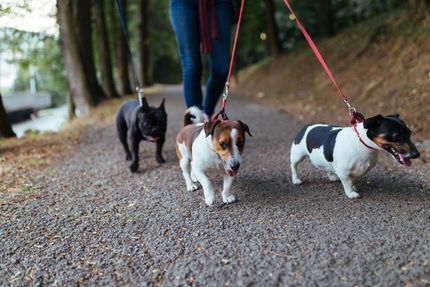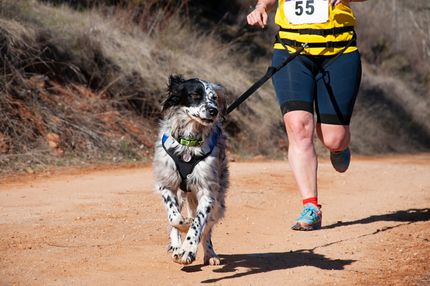Sustainable living with a dog
A sustainable lifestyle doesn't end at the front door - our four-legged companions can also be part of a conscious and environmentally friendly everyday life. Anyone who has a dog knows that toys, food packaging, poop bags and grooming products quickly add up to a considerable ecological footprint. However, there are numerous ways to help protect the environment by making small everyday decisions - without sacrificing anything.
In this article, you will find out how you can live sustainably with your dog, which products make sense and which tips really make a difference.
Why sustainability is important
Sustainability has long been more than just a trend - it's a necessity. Climate change, the decline in natural resources and the increasing littering of our environment make it clear that every decision in our everyday lives counts. This applies not only to our own diet, clothing and mobility, but also to what we buy and consume for our dogs.
The pet industry is constantly growing - and with it the consumption of raw materials, energy and packaging materials. Toys made of cheap plastic, disposable accessories, single-use packaging or products from unsustainable animal husbandry leave an ecological footprint that we often underestimate. When you consider that several million dogs live in Germany alone, it becomes clear that sustainable decisions in the everyday life of every pet owner can make a big difference overall.
In addition, our dogs also benefit directly from environmentally friendly products - because they usually contain fewer harmful substances, are better tolerated and are often processed to a higher quality. Sustainability therefore does not mean doing without, but rather a careful use of resources that focuses on both the environment and the animal.
Environmentally friendly dog accessories - choose wisely
Whether it's a lead, collar, bowl or dog bed - many everyday items for dogs are made of plastic, cheap polyester or materials that have been produced under questionable conditions. It is worth taking a conscious look at the origin and processing.
Here's what you can do:
Look out for products made from natural materials such as organic cotton, hemp, cork or vegetable-tanned leather.
Give preference to local manufacturers or small factories with transparent production.
Invest in high-quality, long-lasting products instead of constantly buying new ones.
Example: A leash made from recycled climbing rope or a dog bed made from old denim can not only be sustainable, but also stylish.
Toys with a clear conscience
Dog toys often quickly end up in the bin - either due to poor workmanship or because they are contaminated with questionable ingredients. Many conventional products contain plasticizers, dyes or plastic parts that are neither good for dogs nor the environment.
Sustainable alternatives:
Chew toys made from natural, untreated materials such as olive wood or coffee tree wood.
Toys made from recycled materials, natural rubber or unbleached cotton.
Homemade toys made from old T-shirts or fabric scraps - inexpensive and resource-saving.
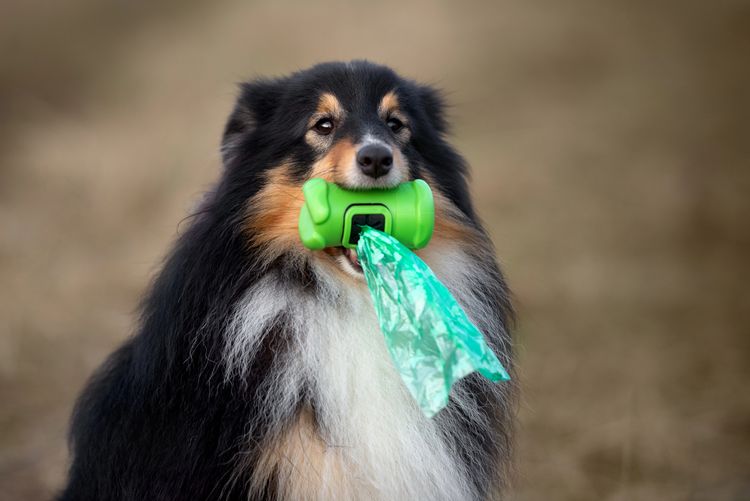
Waste avoidance: poop bags & packaging
On average, a dog produces several poops a day - and each one is (hopefully) disposed of with a bag. Conventional poop bags are made of plastic, which takes many years to decompose.
Better alternatives:
Biodegradable dog poop bags made from cornstarch or other compostable materials.
Reusable bag dispensers made from recycled plastic or fabric.
Packaging-free alternatives for snacks and food, e.g. loose goods from specialist retailers.
When shopping online, it is also worth supporting providers who offer plastic-free packaging and environmentally friendly shipping.
Paw care & hygiene - this is also sustainable
Shampoo, paw ointment or tick protection - many grooming products for dogs contain chemical additives or synthetic fragrances that can end up in the environment and irritate the dog's skin.
Sustainable care solutions:
Natural cosmetics especially for dogs - without parabens, silicones or microplastics.
Homemade care products with just a few ingredients, e.g. coconut oil, camomile or aloe vera.
Tick and flea protection based on essential oils (in consultation with the vet).

Sustainable travel: mobility and traveling with a dog
Sustainability can also be considered on walks, excursions or trips. Short distances can be covered on foot or by bike - instead of getting into the car for every outing. If you are traveling with a dog, you can look out for dog-friendly, environmentally conscious accommodation, e.g. certified eco-hotels or vacation homes with a sustainable concept.
Here too, less is often more. A consciously planned vacation on your own doorstep can often bring more peace and relaxation than a long-distance trip with a long journey.
Environmentally conscious nutrition - is this also possible for dogs?
Sustainability can also play a role in dog food - from the origin of the ingredients to the packaging. The conventional pet food industry consumes a lot of resources, which is why a conscious approach makes sense here too.
What you can look out for:
Feed from regional production with transparent ingredient lists.
Suppliers that rely on organic certification, insect protein or vegetarian alternatives.
Use bulk packaging or refillable packaging to reduce waste.
A reduction in meat - possible for healthy adult dogs in consultation with vets - can also make ecological sense. Insect protein, for example, is a sustainable alternative with a high nutritional value.
Conclusion: sustainability starts small
A sustainable dog lifestyle does not mean changing everything from one day to the next or giving up familiar things. It's about consciously deciding where there are better alternatives - for the environment, for your own health and for your dog's well-being.
With long-lasting products, environmentally friendly materials, a conscious diet and a little creativity, it is possible to create a lifestyle with dogs that uses resources carefully - without sacrificing fun or comfort.
Because sustainable living also means taking responsibility - for people, animals and the environment.
Sources and relevant links
Jennifer Sieglar (2019). Umweltliebe - Wie wir mit wenig Aufwand viel für unseren Planeten tun können. Piper ebooks.
Julia Wenderoth (2018). Lifehacks Hund - Die besten Kniffe für den Alltag. GRÄFE UND UNZER Verlag GmbH.
